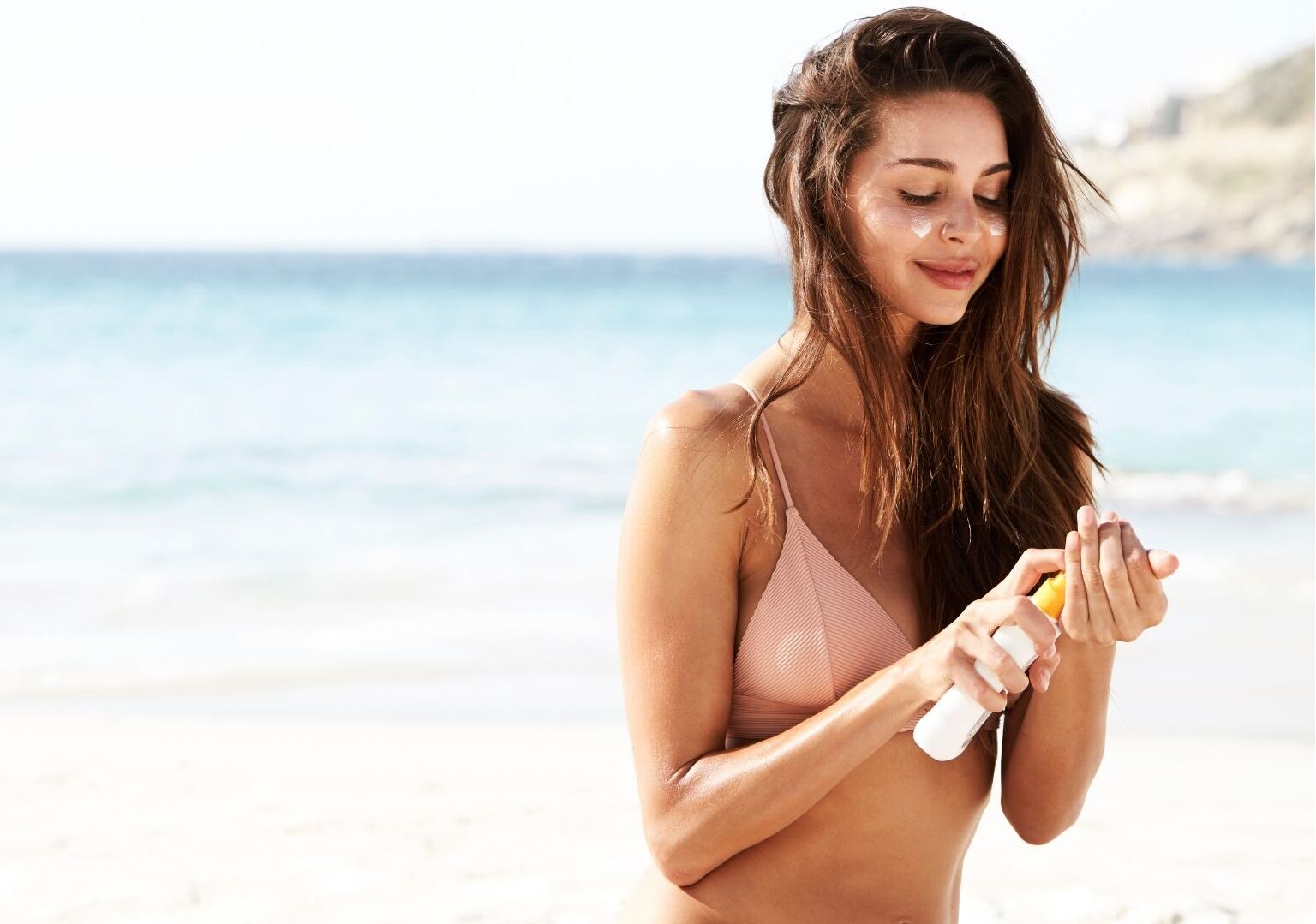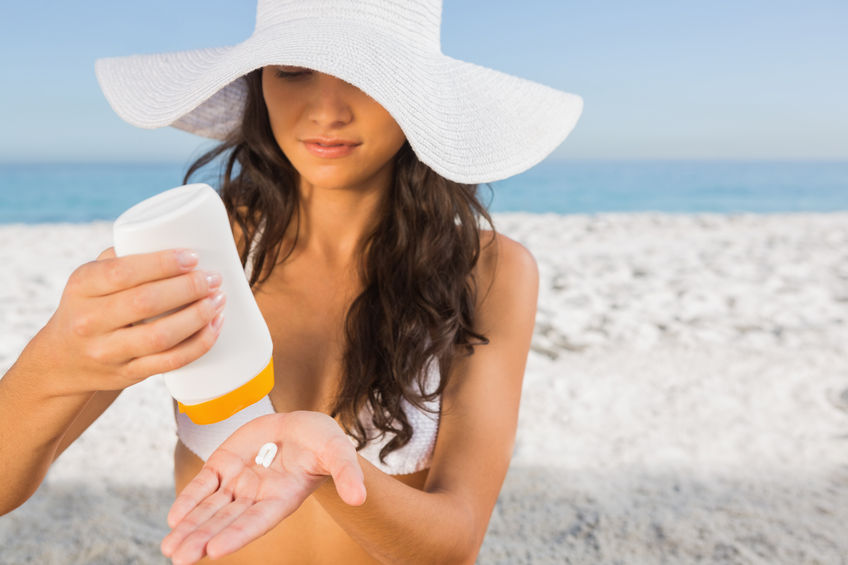
How to Stop Sunscreen from Clogging Your Pores
Do you feel as if your sunscreen is clogging your pores? Well, the truth is that it very well could be. For many people, regularly wearing water-resistant sunscreen—which they choose over non-water resistant formulas to hold up to summertime heat and sweat—can cause clogged pores, bumps, and breakouts. No fun!
In this post, I’ll share the unique sunscreen layering technique I use to prevent clogged pores, along with a few important sunscreen removal tips that can also make a difference.
The Sunscreen Layering Technique to Try
It’s only four steps, but my sunscreen layering technique can keep your skin clear, protected, and bump-free!
Step 1: Apply a Non-Water Resistant Sunscreen That’s Compatible With Your Skin Type
Water-resistant sunscreens are notorious for including oily ingredients, which tend to block the pores, so you don’t want this kind of sunscreen touching your skin first. Instead, you’ll want to apply a non-water resistant sunscreen as your first layer. Make sure that it’s one that’s compatible with your skin and one that you enjoy wearing.
No matter which formula you use, be sure to cleanse, tone, and apply a vitamin C & E serum before applying sunscreen. Once that’s done, apply a generous layer of SPF. The keyword here is generous. Make sure you’re applying the correct amount to your face, neck, and chest. After all, it’s not so much about the SPF number as it is about how much and how often you’re applying. Don’t skimp on sunscreen.
Step 2: Apply a Water-Resistant, Sweat-Proof Sunscreen Over Top of the First Sunscreen
Give the first sunscreen time to settle into your skin. Then, seal it in with a water-resistant formula. The idea is that this layer sits atop the skin’s surface as a kind of sunscreen topcoat without slipping into (and clogging) your pores.
When it comes to water-resistant sunscreen, look for a water-resistant formula that doesn’t feel too heavy on your skin and doesn’t cause any bumps or breakouts. It should hold up to sweating and swimming for 80 minutes as long as it’s applied generously enough.
Note: per the FDA, sunscreens can no longer be labeled as “waterproof,” so you’ll see “water-resistant” instead.
Step 3: Blot Your Skin With a Tissue
This removes any surface oil and tackiness that water-resistant sunscreen might leave behind. Essentially, it de-greases the skin and prepares it for the final step in my special sunscreen layering technique. Just be sure to use a light touch during this step. Don’t swipe or rub at the skin—just blot.
Step 4: Apply a Water-Resistant Sunscreen Powder
Applying a layer of powder sunscreen over top of the first two sunscreens ensures your skin is really protected from the sun. It can also keep your skin from feeling cakey or greasy. For this step, pour a little out into the palm of your hand and pat it on your skin using a toning cloth or cotton round.
Since SPF powder uses titanium dioxide and zinc oxide physical blockers, it works great as your last step to make the sun’s rays bounce off the skin’s surface. It’s also incredibly easy to reapply—simply dust on the mineral powder every 90 minutes. It will even hold up to sweat and swimming since mineral powders tend to be water-resistant. In fact, you can actually see sweat and water bead up on the skin while the powder stays put.
Why This Sunscreen Layering Technique Works
This technique offers UV protection from both chemical and physical sunscreens and ensures that UV protection will hold up through sweating and swimming. It also won’t clog pores or cause bumps and breakouts—well, as long as you remove the sunscreen properly (read on for removal instructions).
I want to mention that just because I’m recommending that you use an SPF 30, 60, and 50, doesn’t mean your skin is getting a combined SPF of 140. When it comes to layering sunscreens, the scientific community is unsure as to exactly what SPF number results. However, it does ensure you’re getting good protection.
How to Properly Removed Layered Sunscreen
Wearing sunscreen is crucial for protecting your skin from UV rays. However, proper sunscreen removal is also important, especially if your skin type is prone to breakouts. These are skin types that are prone to clogged pores, which is why it’s absolutely essential that you thoroughly clean your skin and use skincare ingredients that will help disrupt the blemish cycle.
Step 1: Cleanse Your Skin Using a Lightweight Cleansing Lotion on Dry Skin for 60 Seconds
The type of cleanser you choose is SO important. You need to use a cleanser that contains lightweight emollients (oils), instead of a water-based cleanser. The reason for this is that water-resistant sunscreens contain emollients that are designed to repel water. So, if you use a water-based cleanser to remove a water-resistant sunscreen, it won’t break down the sunscreen properly, which means you won’t be cleaning your pores properly.
Apply a cleanser that contains emollients to dry skin—don’t add water just yet. Massage it thoroughly over your skin for 60 seconds. Then, wet your fingertips, massage it through again, and rinse off. The most important part comes next. Wipe the skin with a facial sponge or gentle baby washcloth. This will lift away with you have just dissolved.
Massage it thoroughly over the face for 60 seconds. Then, wet your fingertips, massage through again, repeat and rinse off. Next, and the most important part, is to wipe over the skin with a facial sponge or gentle baby washcloth. You want to really lift off and remove what you have just dissolved.
Step 2: Treat Your Pores to a Cleansing Mask
If water-resistant sunscreen is clogging your pores, your skin will really benefit from a deep pore-cleansing mask. You’ll want to find one that contains salicylic acid. This ingredient is a BHA (beta hydroxy acid) and since it’s oil-soluble, it can penetrate into the pore lining to clear trapped debris that can lead to bumps and breakouts. Apply the mask to your entire face and leave it on for 15 minutes.
Step 3: Apply a Toner and Antioxidant Serum
After rinsing off the mask, apply an alcohol-free toner. Then, apply a powerful repairing serum. Since your skin’s natural antioxidant supply has been depleted from being outside (this is the case even if you applied a vitamin C serum in the morning), you want to restore it with essential vitamins. This could mean applying a vitamin C serum again.
Step 4: Lastly, Apply a Lightweight Oil-Free Lotion
At this stage, there have been a lot of emollients on your skin, from the water-resistant sunscreen to the emollient cleansing lotion, so you’ll want to hydrate your skin with something lightweight and oil-free.
The skin is now properly cleaned and left feeling impeccably fresh. What’s more is that you won’t have to worry about a post-sunscreen backlash of clogged pores, bumps, and blemishes. This process works really well for sensitive skin that’s prone to clogged pores, and I hope it works for yours, too! And if all else fails, come into Botanica Day Spa for a rejuvenating facial!
Love,
Gen



Leave a Reply